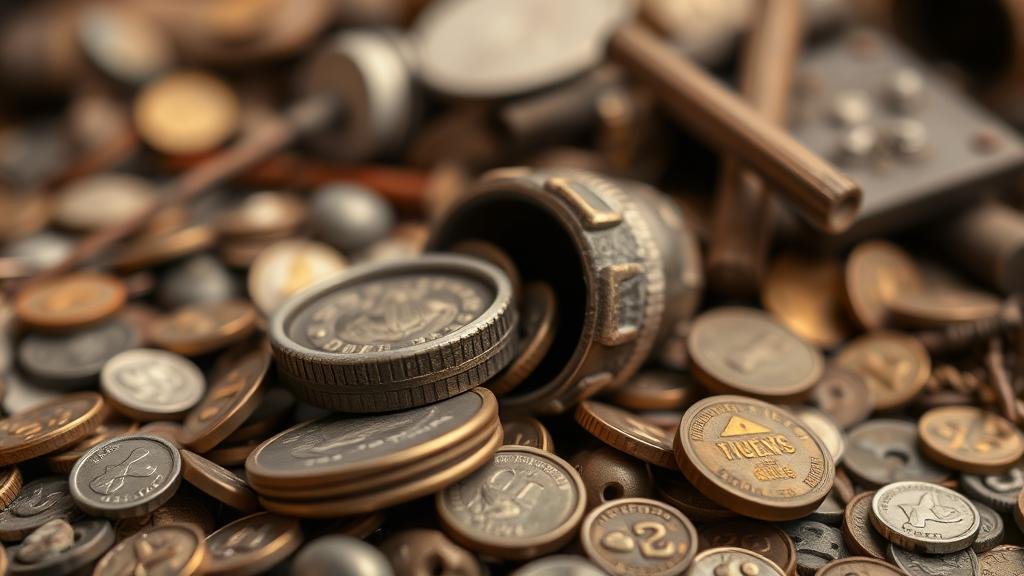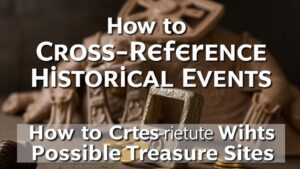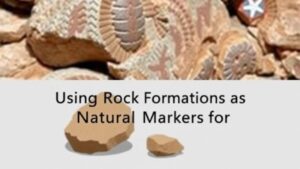Recovering Coins and Tools From Relocated Town Sites
Recovering Coins and Tools From Relocated Town Sites
The recovery of coins and tools from relocated town sites is a fascinating intersection of archaeology, history, and metal detecting. As communities evolve, the remnants of past settlements often lie buried, waiting to tell their stories through the artifacts they left behind. This article explores the methodologies, significance, and challenges associated with recovering these valuable artifacts.
Understanding Relocated Town Sites
Relocated town sites often stem from urban development, environmental changes, or resource depletion. For example, towns may be moved due to flooding caused by dam construction, while others might be displaced to pave the way for infrastructural development. A notable example is the town of Centralia, Pennsylvania, which was abandoned due to an underground coal fire. As such sites become relics of history, they offer a unique window into the lives of their past inhabitants through the artifacts they left behind.
The Importance of Coins and Tools in Historical Context
Coins and tools are not merely items of economic or functional value; they are key to understanding the sociocultural context of the communities that used them. Coins can provide insight into trade practices, economic conditions, and even social hierarchies, while tools reveal the technological advancements and daily lives of the people. For example, the recovery of a 19th-century silver dollar at a relocated town site may point to the trade networks of that era and the wealth distribution within the community.
Methodologies for Recovery
The process of recovering coins and tools from relocated sites requires meticulous planning and execution. The methodologies can be divided into several key stages:
- Research: This involves historical research to identify the location of the relocated town and the period during which it was active. Archival documents, maps, and historical texts are essential.
- Site Assessment: Experts typically conduct a site assessment to evaluate the environmental conditions, the state of the remaining structures, and potential contamination.
- Field Surveys: Systematic surveys using metal detectors and geophysical methods help to locate artifacts. Geophysical surveys, for instance, can identify underground anomalies without reaching the site.
- Excavation: Once potential sites are identified, excavation is performed carefully to minimize damage. Archaeological principles guide the excavation, focusing on stratigraphy and context recovery.
Challenges in Artifact Recovery
Despite its rewards, recovering coins and tools presents several challenges:
- Legal Regulations: Local laws often dictate what can be recovered and where. Respecting legal frameworks is critical to avoid fines or confiscation of artifacts.
- Ethical Considerations: Ethical dilemmas arise regarding the treatment of human remains and sacred spaces. Collaboration with local communities and Indigenous groups can provide culturally sensitive approaches.
- Environmental Factors: Soil conditions or invasive species can complicate recovery efforts. For example, waterlogged sites can deteriorate organic materials found alongside metal artifacts.
Case Study: Recovering Artifacts in Relocated Mining Towns
One of the most illuminating examples of artifact recovery comes from the many mining towns in the western United States. Many of these towns were abandoned when mines became unprofitable. Researchers conducting excavations in places like Bodie, California, have yielded thousands of artifacts, including coins, tools, and household items that told the story of early miners.
Through careful excavation and recording of the site, archaeologists uncovered a wealth of information about daily life, mining technology, and trade networks. For example, the discovery of a miners toolkit, filled with hand-forged tools, provided insights into the methods used during the gold rush era, highlighting not only the technical skills of the miners but also their socioeconomic statuses.
Real-World Applications of Findings
The findings from relocating town sites are not just historical curiosities; they have practical applications in various fields:
- Education: Artifacts provide tangible learning experiences for students, illustrating historical narratives.
- Tourism: Recovered sites can attract tourism, benefiting local economies while preserving cultural heritage.
- Policy Development: Insights gained from recovering these artifacts can inform better practices in urban development, environmental management, and cultural preservation.
Conclusion and Actionable Takeaways
Recovering coins and tools from relocated town sites is a multifaceted endeavor that blends history, archaeology, and community engagement. Whether you are an amateur metal detectorist or a professional archaeologist, respecting legal frameworks, ethical considerations, and community narratives is essential in this work. Future efforts should focus on interdisciplinary collaboration to ensure that these historical treasures are preserved and shared responsibly. By understanding the methodologies and challenges, individuals and organizations can make informed decisions that honor both the past and future.



